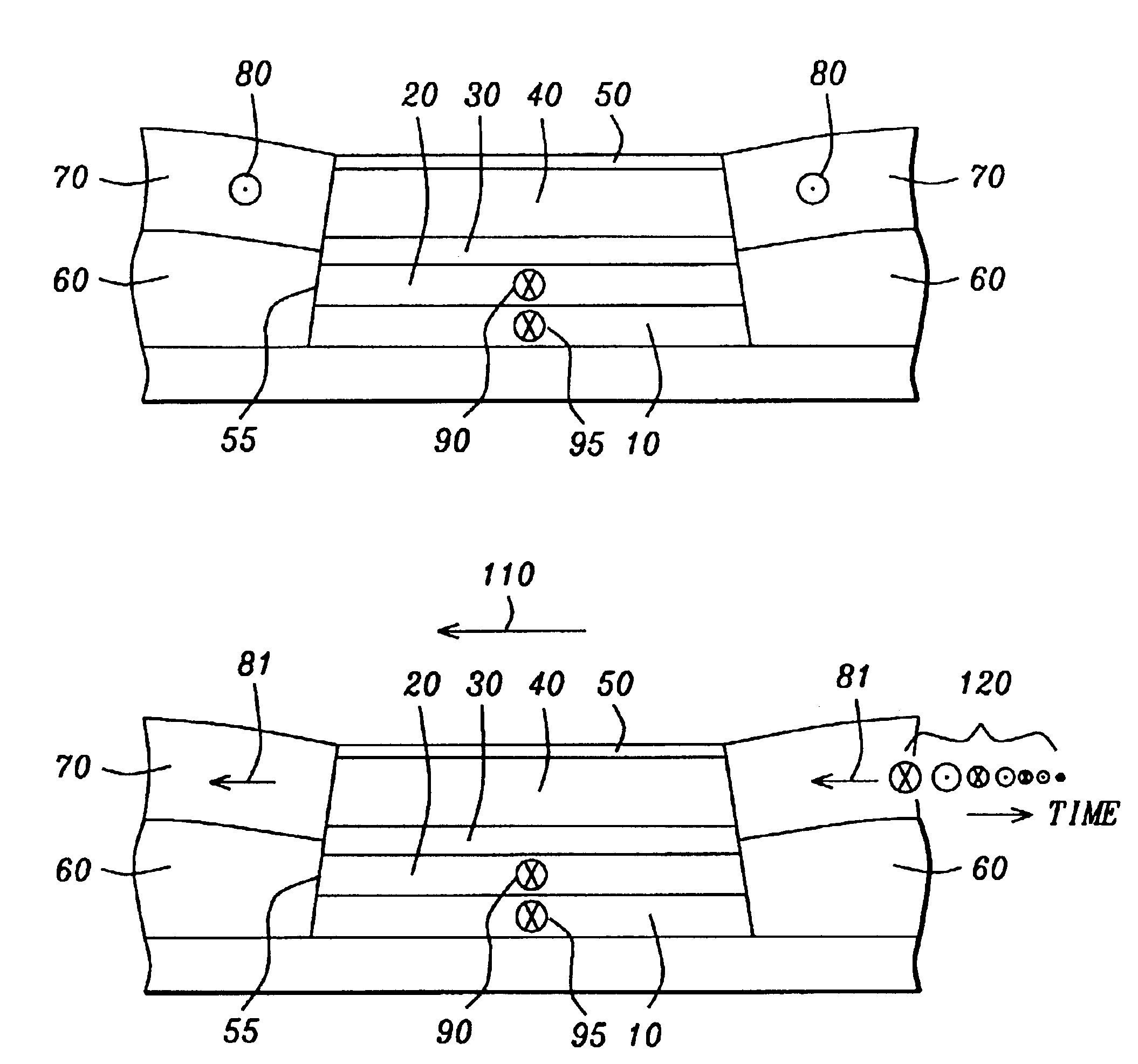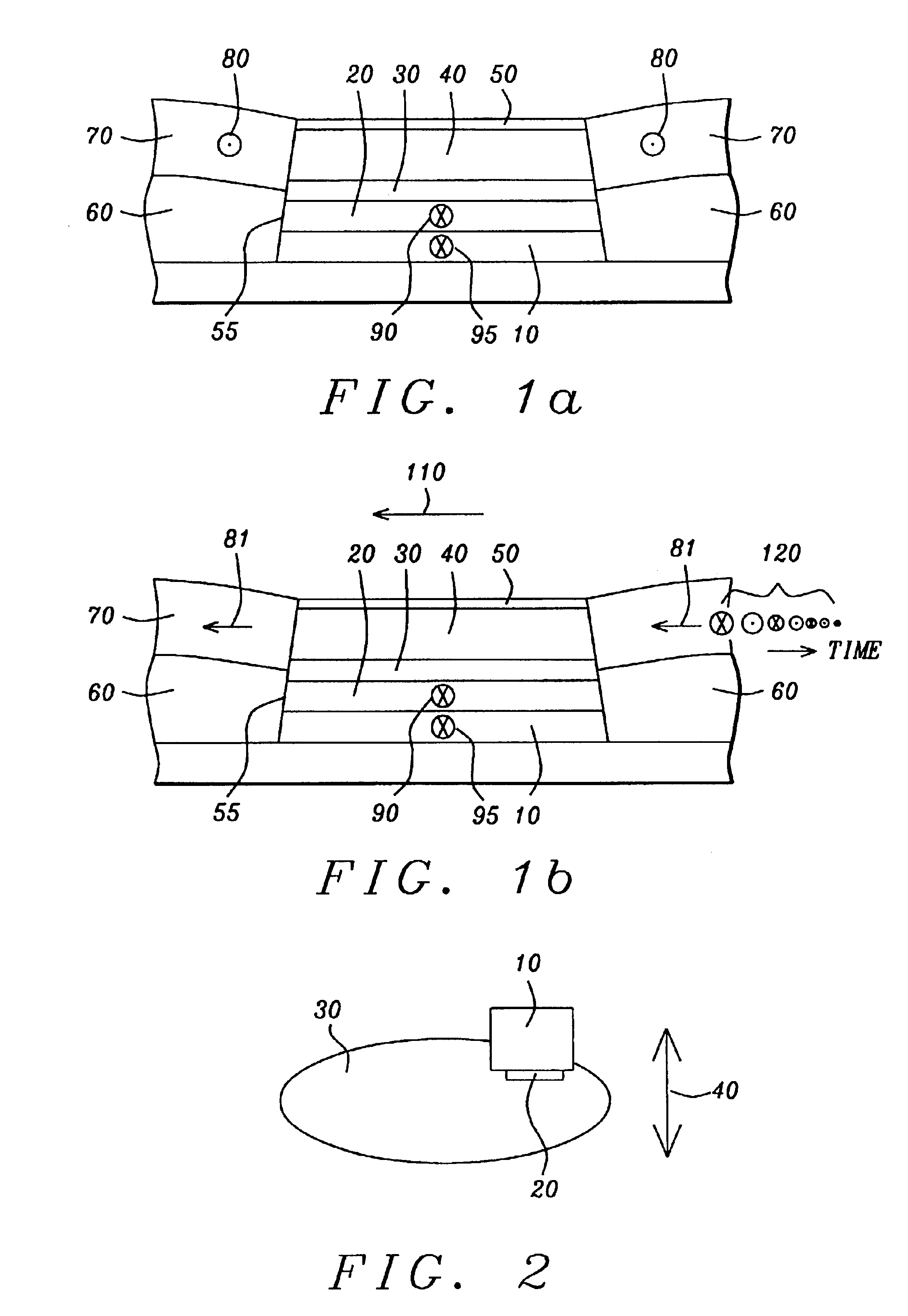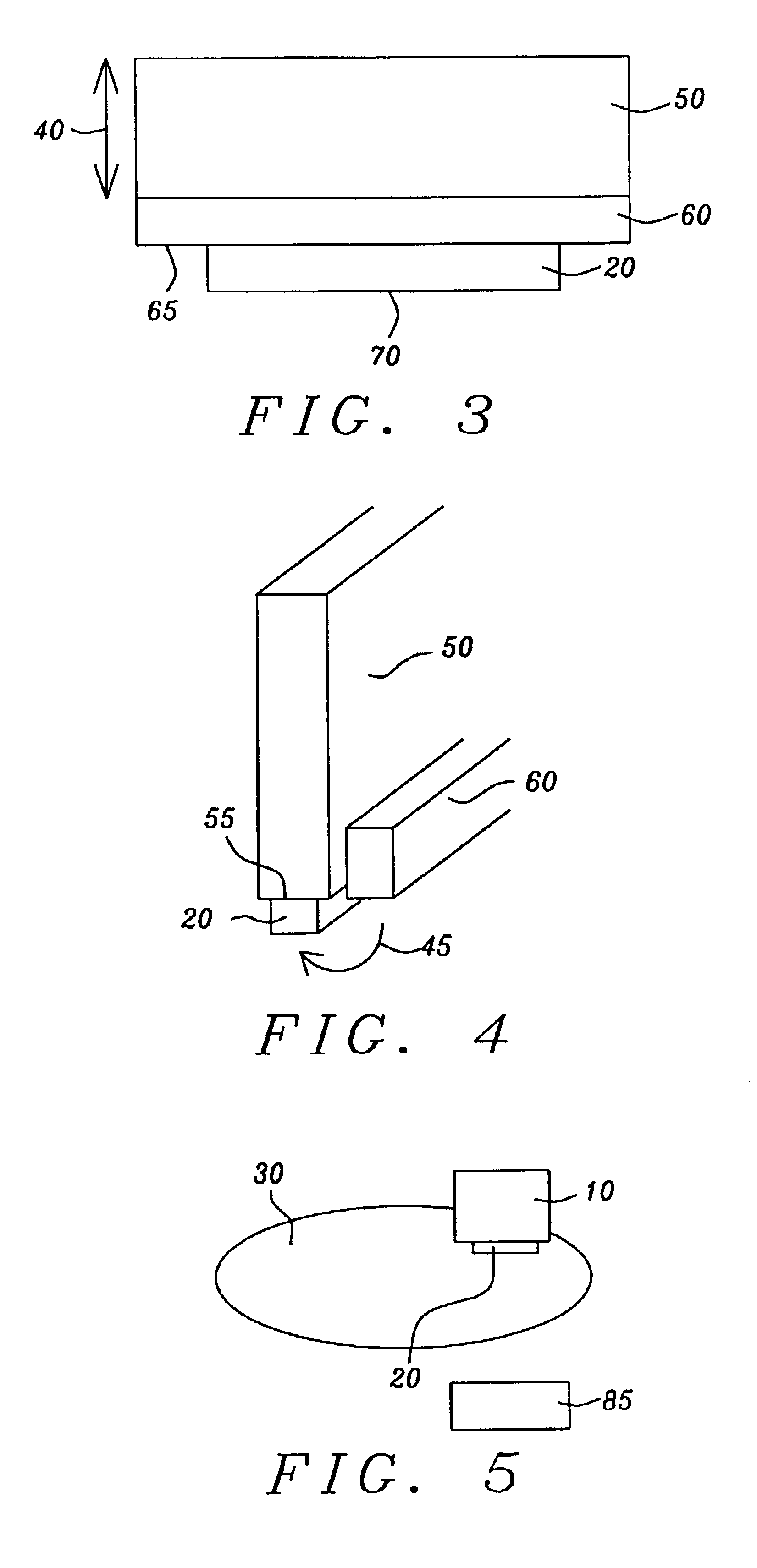Method for preventing magnetic damage to a GMR head during back-end processing
- Summary
- Abstract
- Description
- Claims
- Application Information
AI Technical Summary
Benefits of technology
Problems solved by technology
Method used
Image
Examples
first preferred embodiment
[0023]Referring first to FIG. 1a, there is shown a schematic cross-sectional view of the layer structure of a typical prior-art type GMR read head in the plane of its air-bearing surface (ABS). There is shown the antiferromagnetic (AFM) pinning layer (10), the transverse biasing layer that is the ferromagnetic pinned layer (20) formed on the AFM layer and pinned by the AFM layer, a non-magnetic spacer layer (30) formed on the pinned layer, the ferromagnetic free layer (40) formed on the spacer layer and a capping layer (50). The lateral edges (55) of the layers are shaped so that conducting lead layers (60) and longitudinal biasing layers (70) can be can be deposited and abutted against them as shown in the figure. The figure is both schematic and exemplary. Other configurations of MR and GMR read heads, such as those having laminated free and / or pinned layers, can be equally well treated with the method to be described.
[0024]The diagram also shows the novel magnetization direction ...
second preferred embodiment
[0027]Referring now to FIG. 2, there is shown a schematic diagram of the fixture of the second preferred embodiment (10) holding a secured workpiece (20) against a lapping plate (30). The workpiece is typically a “row bar”, ie., a section of wafer containing multiple GMR head assemblies. The stabilizing magnetic field is shown as a double headed arrow (40), indicating its direction and two possible senses. It is to be noted that the fixture may be used in a lapping process or it may be used in other processes in which a workpiece is to be securely mounted during processing.
[0028]Referring next to FIG. 3, there is shown a somewhat more detailed schematic illustration of the fixture ((10) of FIG. 2), showing that the fixture comprises a first portion, which is a non-magnetic or soft magnetic portion (50), to which is attached a second portion, which is a magnetic portion (60), which can be a permanent magnet (hard magnetic material) or an electromagnet. A ceramic magnetic material, pr...
PUM
| Property | Measurement | Unit |
|---|---|---|
| Time | aaaaa | aaaaa |
| Auxiliary magnetic field | aaaaa | aaaaa |
| Auxiliary magnetic field | aaaaa | aaaaa |
Abstract
Description
Claims
Application Information
 Login to View More
Login to View More - Generate Ideas
- Intellectual Property
- Life Sciences
- Materials
- Tech Scout
- Unparalleled Data Quality
- Higher Quality Content
- 60% Fewer Hallucinations
Browse by: Latest US Patents, China's latest patents, Technical Efficacy Thesaurus, Application Domain, Technology Topic, Popular Technical Reports.
© 2025 PatSnap. All rights reserved.Legal|Privacy policy|Modern Slavery Act Transparency Statement|Sitemap|About US| Contact US: help@patsnap.com



